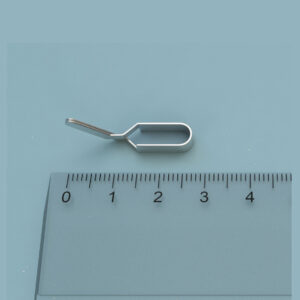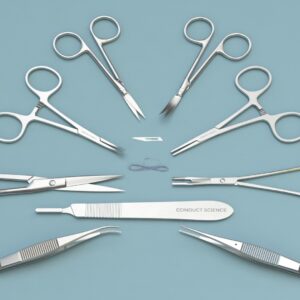$2,290.00
The Pig Conditioned Place Preference (CPP) test is employed in experiments to evaluate pigs’ preferences for different rooting materials. This apparatus is designed in the shape of a capital T.
Eighteen materials are divided into six distinct categories, with each category containing three materials that share similar characteristics such as structure, particle size, complexity, destructibility, and digestibility. In a balanced design, twelve pairs of pigs select from the three materials within each of the six categories.
For each category, the pairs of pigs are presented with four immediate choices among the three materials within a three-armed maze. If the pigs do not choose a maze arm within 90 seconds, a ‘no choice’ result is recorded.
Maze Engineers provide a Pig CPP Maze with options for custom coloring and other customizations upon request.

MazeEngineers empowers preclinical neuroscience research with meticulously designed, customizable behavioral apparatuses. From manual classic mazes to fully automated smart systems, we provide the tools scientists need to capture high-quality, reproducible data for studies on learning, memory, anxiety, and depression.



Features |
Arm Length of rooms: 2.4m |
Arm Width of rooms: 2.4m |
Width of centrally placed start are: 2.4m |
Length of centrally placed start are: 2.4m |
Width of walls and gate separating rooms and start area: 1.75m |

The Pig Conditioned Place Preference (CPP) chamber is a three-way maze utilized to examine complex cognitive behaviors, memory, and learning in pigs. This apparatus operates on the same principles as the Conditioned Place Preference setups commonly used with rodents to evaluate responses to conditioned cues.
Featuring a three-arm design, the pig CPP offers a straightforward setup for assessing the animals’ performance. The task requires the pig to choose one of the three arms based on its preference for the stimuli presented in each arm. Given that pigs may exhibit aversion to individual testing, the pig CPP is designed to allow pairs of pigs to move freely. This setup can be adapted to study the impact of brain lesions, pharmacological interventions, and other treatments that affect behavior, preferences, learning, and memory. Additionally, the pig CPP aids in understanding the underlying processes influencing preferences and cognitive abilities.
The pig CPP consists of three identical compartments and a starting area. It includes removable doors to block off arms, either to confine the animals or introduce novelty during testing. Similar mazes used to investigate cognitive behaviors in pigs include the pig T-maze, the piglet T-maze, and the pig 8-arm radial maze.
The pig CPP maze features a three-arm design with a central starting area. The choice arms, or rooms, extend to the right, left, and straight ahead from the start area. Each room, as well as the start area, measures 2.4 meters by 2.4 meters. The maze is constructed with high walls, and each room’s entryway, along with the starting area, is equipped with 1.75-meter-wide gates made from vertical tubular metal bars.
Thoroughly clean the apparatus before training to eliminate waste materials and any residual stimuli that might influence task performance. The Noldus EthoVision XT tracking system can be utilized to record and monitor the movements of the test animal within the pig CPP.
Escort the animals in pairs from the housing pen to the holding area to minimize stress, keeping them there for at least 30 seconds. After the holding period, open the gate to the start area and encourage the animals to enter. Initiate training by opening the entryway to only one of the rooms in the maze. If the animals do not enter the room within 2 minutes, gently guide them in and block the entryway. Allow the animals to explore the room for at least 3 minutes. Then, guide the animals back to the holding area for at least 30 seconds. Repeat this process for the other two arms in the same manner. Train each pair three times a day for three consecutive days. Before the first test, provide each pair with one training session in the maze.
Escort the animals in pairs from the housing pen to the holding area to minimize stress, and keep them there for at least 30 seconds. Place the stimuli in their designated rooms and ensure all entryways in the maze are open. Give the animals ninety seconds to select their preferred room. Once they enter their chosen room, close the door to confine them for 3 minutes. Assess the pair four times consecutively. Repeat this process for the remaining pairs.
Jensen, Studnitz, Halekoh, Pedersen, and Jørgensen (2008) conducted research to explore pigs’ preferences for various rooting materials using the pig CPP paradigm. Rooting materials were categorized broadly as CHIP, TOY, ROUGH, EARTH, HAY, and STRAW, based on characteristics such as structure, particle size, complexity, destructibility, and digestibility. Male and female pairs of pigs were assessed for their preferences among 18 different materials, presented in various combinations within maze rooms according to their categories.
Significant preferences were observed among pigs for materials classified under the categories EARTH, CHIP, and ROUGH, particularly favoring compost, wood chips, and maize silage within these groups. However, preferences within the latter two categories did not achieve statistical significance. Across all tested groups, no significant preferences for materials categorized as TOY, HAY, and STRAW were evident.
The following parameters are observed in a pig CPP:
A choice is recorded if one of the animals in the pair steps into the room with all four legs and the other animal crosses the same room’s threshold by at least two legs.
The pig CPP chamber enables assessment of pig preferences, as well as their learning and memory capabilities, utilizing a straightforward three-arm design. Its adaptable and modifiable design caters to diverse investigative requirements. The apparatus includes gates that facilitate animal confinement, enabling task delays. Introducing an opaque gate instead of bars allows for blocking off areas to introduce novelty during training sessions. The maze accommodates pairs of animals comfortably due to its size. Observations within the pig CPP are clear-cut, facilitating straightforward data analysis. It serves as a tool to examine various behaviors such as predator response and the impact of pharmacological interventions on pigs’ cognitive functions.
The effective operation of the pig CPP hinges on adequate training to assess both short-term and long-term preferences accurately. Isolating individual pigs may lead to skewed observations due to their potential aversion to solitude. Therefore, maintaining consistent training levels is crucial for obtaining reliable outcomes. Cleaning plays a critical role by removing potential impediments from the experimental process. Additionally, unbiased results depend on considering factors such as the age and gender of the test animals.
Jensen, M. B., Studnitz, M., Halekoh, U., Pedersen, L. J., & Jørgensen, E. (2008). Pigs’ preferences for rooting materials measured in a three-choice maze-test. Applied Animal Behaviour Science, 112(3-4), 270-283.
There are no questions yet. Be the first to ask a question about this product.